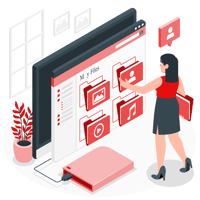UTM links are important to use when tracking the performance of LinkedIn advertising campaigns...
Effective lead generation with LinkedIn Marketing Solutions.
Many marketers assume that generating more leads is equal to generating a higher volume of sales and revenue. But similar to fishing, casting a wide net doesn’t always guarantee that every fish you catch will be edible.
In this article we give you tips on optimising your LinkedIn campaigns to acquire quality leads that drive high ROI, divided into three stages of a campaign.

Before starting a campain you need to ask yourself those 6 questions:
- How does your company define a sales conversion? Is it an account opening, subscription, application or event registration? Whatever it is, we have to understand how a conversion is defined once the lead is moved through the sales cycle.
- How long is your sales cycle? Sharing the length of your sales cycle enables LinkedIn to check-in on lead nurturing and how these are moving through the sales funnel. We can optimise future campaigns and closely monitor return of investment (ROI). Generally, sales cycles of over six months see very high ROI.
- What does a ‘quality lead’ mean to you? Listing attributes your ideal audiences have can ensure that the targeting will reach that particular buyer persona.
- Do you use marketing automation tools? If you use a marketing automation tool, integrate it with your LinkedIn Lead Gen Forms campaign. This makes the process of collecting, contacting, and nurturing leads more efficient. This can potentially reduce the time it takes to contact leads.
- What is your sales teams’ lead response time? Studies show that sales reps are 7x more likely to have a meaningful conversation with leads if they respond to them within the first hour. The longer your team takes to reach out, the less likely these convert to sales.
- How are leads nurtured? According to Marketo, on average 50% of the leads in any system are not yet ready to buy. To move them down the sales funnel, nurture these leads via website re-targeting or contact targeting in your LinkedIn campaign.
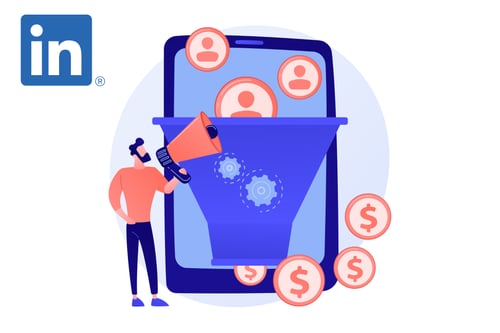
How to optimise your campaign:
Pre camapign:
You need to have a clear vision of the personas you want to target with your campaign to transcribe it in campaign manager with LinkedIn targeting options. Also, the creative you will use for your Adset needs to be optimise to increase theirs impacts.
targeting tips:
- Avoid hypertargeting as this will exclude people who could easily be converted into leads and eventually customers. Test targeting a larger audience initially. Cost per lead (CPL) and lead quality feedback can then allow the audience to be narrowed down.
- Set up different campaigns and approaches (A/B Testing). Track effectiveness of generating leads and distribute budget to campaigns delivering low CPL and high lead quality.
- Use Matched Audiences (contact list targeting) to reach prospects familiar with the brand and product. You can look at subscribers from your blog, existing customers interested in new products and leads who have shown interest in the past. These prospects may be more likely to convert.
- Leverage Lookalike Audiences to reach a larger number of people with similar characteristics as your customers or ideal buyer personas. Upload a list of existing or valuable past leads to find new, similar audiences. Seed lists are excluded from new Lookalike Audiences, so there’s no double up.
- If you are using the Insight Tag, use Website Demographics to view the demographics of visitors to your site. You can gauge those familiar with your brand who are interested to learn about your products. They can then be targeted in lead generation campaigns to take the next step of submitting their information.
Creative tips:
- Generate demand. When broadening campaign reach and looking to generate leads at scale, you are likely targeting audiences unfamiliar with your business. When developing creative, remember, you may need to generate demand – not just leads.
- Be clear and compelling. Make your creative compelling, clear and relevant to specific audiences. When people know what they’re signing up to, they can make a more informed decision before submitting their details.
- Make it short, but sweet. Keep your copy concise but effective in generating interest and consideration. Cut down on unnecessary and redundant words and phrases as this creates confusion.
- Be specific. Write specifically for one potential customer in your target audience. Include specific details within your ad copy that are relevant to the client’s buyer persona (or customized for multiple buyer personas). Call out your audience and address their specific pain points.
- Tell them where to go. Consider your call to action (CTA). Include one focused CTA in the ad copy which prompts a specific action, e.g. ‘learn more about’, or, ‘download our whitepaper on.
- Test your creative. A/B test different creative with the same targeting (or different targeting with the same creative) to identify which ones generate the highest quality leads. The more nets you cast, the more you’ll catch.
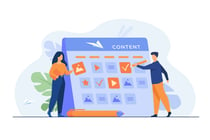
During campaing:
As your campaign goes you will be able to optimise our lead quality using those 4 pillar:
- Feedback on lead from the sales team? After the leads are contacted by the sales team, it’s time to collect feedback. You can request feedback data (appointments booked, not interested, criteria not met, converted to sale). Only then, relevant optimisations can be made.
- Which targeting is generating the highest quality leads? If multiple audiences are targeted, collecting this feedback allows performance evaluation of each campaign. Redistribute budgets towards higher performing campaigns and pause lower performing ones.
- Have you achieved sales conversions so far? If a specific product has a short sales cycle, identify if leads from your campaign have led to sales conversions. If so, use the value of the deal to measure ROI. If the results are good, consider investing further to drive for a higher volume of quality leads.
- How is the lead quality from other channels? If you have marketing activity running on other channels, check the lead quality from those channels as well. Though costs may be higher on LinkedIn compared to other platforms, the higher quality leads on LinkedIn may lead to larger deal sizes and better ROI.
Supercharge your campaign with these tips:
- Supplement your lead gen ads with demand generation activity to create awareness and familiarity with your brand and products.
- Have a strong nurture strategy in place to reiterate messaging to your audience and eventually convert them into leads.
- Create at least 1 to 2 additional pieces of creative aimed at educating your audience about your brand. Then, drive them to your website to learn more. These demand gen ads can either be run in parallel with lead gen ads, or before lead gen ads are launched to create awareness.
- Use website retargeting from website prospects on LinkedIn to follow up with more targeted lead generation activity.
During your campaign make sure you are using the right conversion tool (LeadGen Form or website conversion) for the selected campaign. Optimise by campaign type using conversion tracking, implement marketing automation to nurture and lead scoring to maximese ROI and help your sales prioritise theirs efforts.
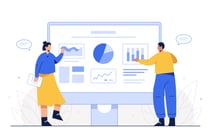 Post campaign:
Post campaign:
It’s time to analyse your results and understand the worth of your effort. Here is a little example and tips on campaign analytics.
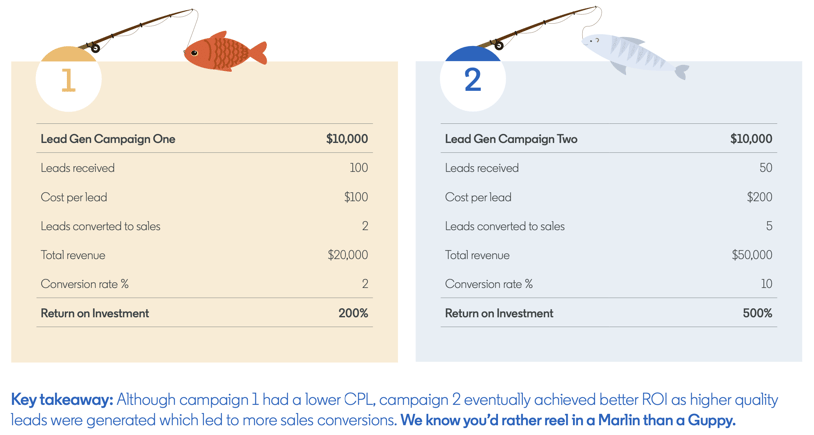
Post campaign, be sure to track metrics such as number of sales conversions achieved and the value of each sale. This will help you formulate a strategy for future campaigns that will drive strong ROI and cast a wide and powerful net.
Keeping notes on formats, descriptions and CTA’s what worked great on your audiences is also a good idea to inspire and duplicate success when creating a new campaign.
If you still have questions regarding marketing campaigns on LinkedIn, feel free to reach out to us, we are here to help.
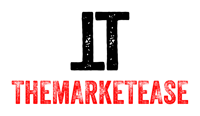
.png?width=50&name=profile-pic%20(8).png)
.jpg?width=400&name=Project%201%20(1).jpg)
